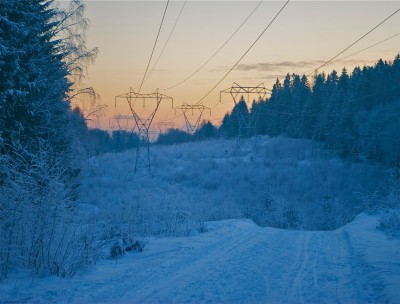As Norwegians braved the latest week of an unusual deep freeze, concerns rose over not only skyrocketing electricity rates but whether power supplies would be adequate. Meanwhile came word the cold snap may actually be healthy.

Authorities reported that reservoirs used to supply Norway’s hydro-electric power haven’t been as empty as they are now for 20 years. That sent spot prices for power up to 61 øre per kilowatt hour this week in eastern Norway (Østlandet), up from 28 øre at this time last year. Prices in central Norway, which has been hit the hardest by dwindling reservoir levels, hit 66 øre, compared to 29 øre last year, according to marketmakers NordPool.
The Norwegian Water Resources and Energy Directorate (NVE) reported average reservoir capacity levels of 57.6 percent last week. “In clear text that means that water levels in 2010 are the poorest for 20 years,” Arne Søiland of NVE told newspaper Aftenposten.
With temperatures diving to as low as minus-26C in some areas of metropolitan Oslo, consumption remains high as is the case elsewhere in the country. Electricity bills on average are expected to be NOK 7,000 (about USD 1,200) higher for the months of December, January, February and March according to calculations by magazine Dine Penger (Your Money).
In central Norway, power supplies were becoming so precarious and expensive that state power authority Statkraft was putting mobile gas power plants on standby. Electricity rates were expected to continue to increase in the next several weeks, as weather forecasts called for more bitterly cold weather.
Health care officials reported this week, however, that they’re not seeing any increase in illness rates and claimed the cold weather can be healthy.
“We actually have less demand right now than normal,” Dr Christian Groth of the Bjørnsletta medical center in Oslo told Aftenposten. “We usually have a lot of patients at the time of year, but it appears the stable cold weather is better than the swings we often have. Folks get used to the cold, dress well and keep themselves healthy.”
Public appeals for constant hand-washing during last year’s swine flu epidemic also has had lasting effects. One nurse in Røros, known for extreme cold most winters, noted that when the thermometers plummet, more people also stay indoors.
“When it gets really cold, demand actually goes down,” Jorunn Melkild told Aftenposten. “It can also be because fewer people go outdoors.”
Views and News from Norway/Nina Berglund
Join our Forum if you’d like to comment on this story.

